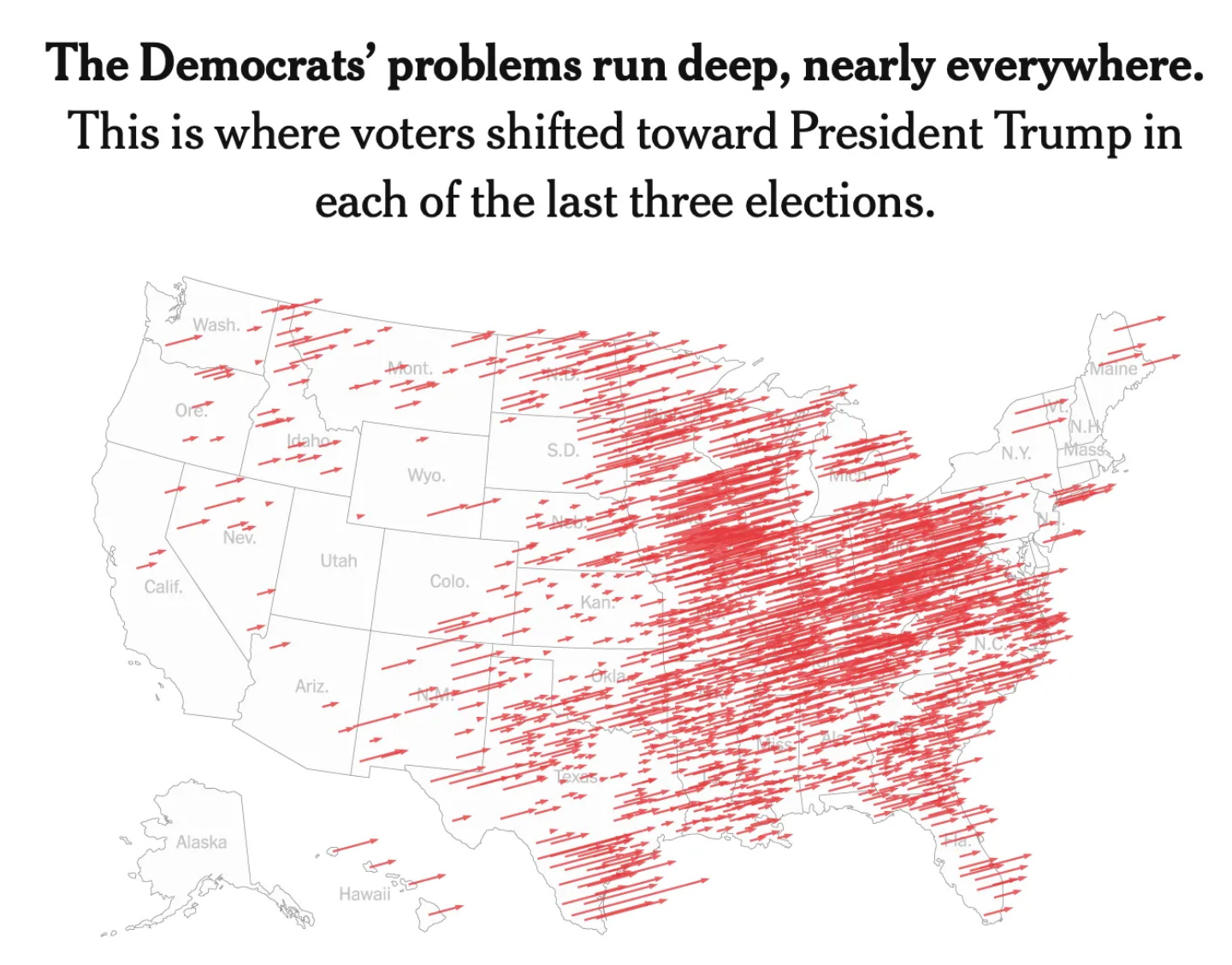We’ve only had the best data on the 2024 election for a few days, but
is out today with a big-picture cautionary tale on over-reading the crosstabs: Democrats should care less about demographics.It’s true that the swing was larger in some sub-sets of the population than in others, but that, in turn, basically comes down to the fact that people who were more impressionable were more likely to change their minds. The swing, in other words, happened among swing voters. These voters are mostly younger and less-engaged and disproportionately Hispanic. But it’s not like the swing only happened among young Hispanics and now Democrats now need to triple-down on understanding what young Hispanics think.
There are just not that many open-minded people in a polarized country — a lot of folks are very dug-in on Trump, either pro or con. People who are younger and people who pay less attention to the news are more open-minded, and the Latin population in the United States is much younger and less attentive to mainstream news than the Anglo population. Demographic targeting is important for certain micro elements of political strategy, but the macro picture is that Democrats did worse with all kinds of voters. And the key to doing better almost certainly won’t be found in micro strategies.
Back in 2020, we would have referred to the author as “Matthew Yglesias, a college-educated, high-income, urban, cisgender, Hispanic, married, white millennial male.”
But the crucial data point about him is he’s not a swing voter:
It turns out that the group of low-information voters who swung heavily toward Trump because they were angry about the economy is now mad at Trump, because they are still angry about the economy. It’s true, factually, that “young people who don’t follow politics closely” is a much more Hispanic slice of the population than the national average. Or alternatively, it’s true that the Hispanic population contains a large fraction of young people who don’t follow politics closely. But either way, the people at issue are not responding to events in a distinctively Hispanic way. They are responding to events like people who lack strong partisan attachments or deep interest in the issues and just care a lot about whether the economy seems to be doing well.
You should read the whole piece (link), but the frame that really struck me is that demographic slicing is most useful to inform marketing strategy. Not the product!
When advertising to young or Hispanic or Black or Midwestern voters, the messenger really matters.
But in the big picture, swing voters did not like the product. Hence pictures like this, from the NYT yesterday:
987 days until the next presidential primary.
It’s a great day to be an American, and a grateful American.



